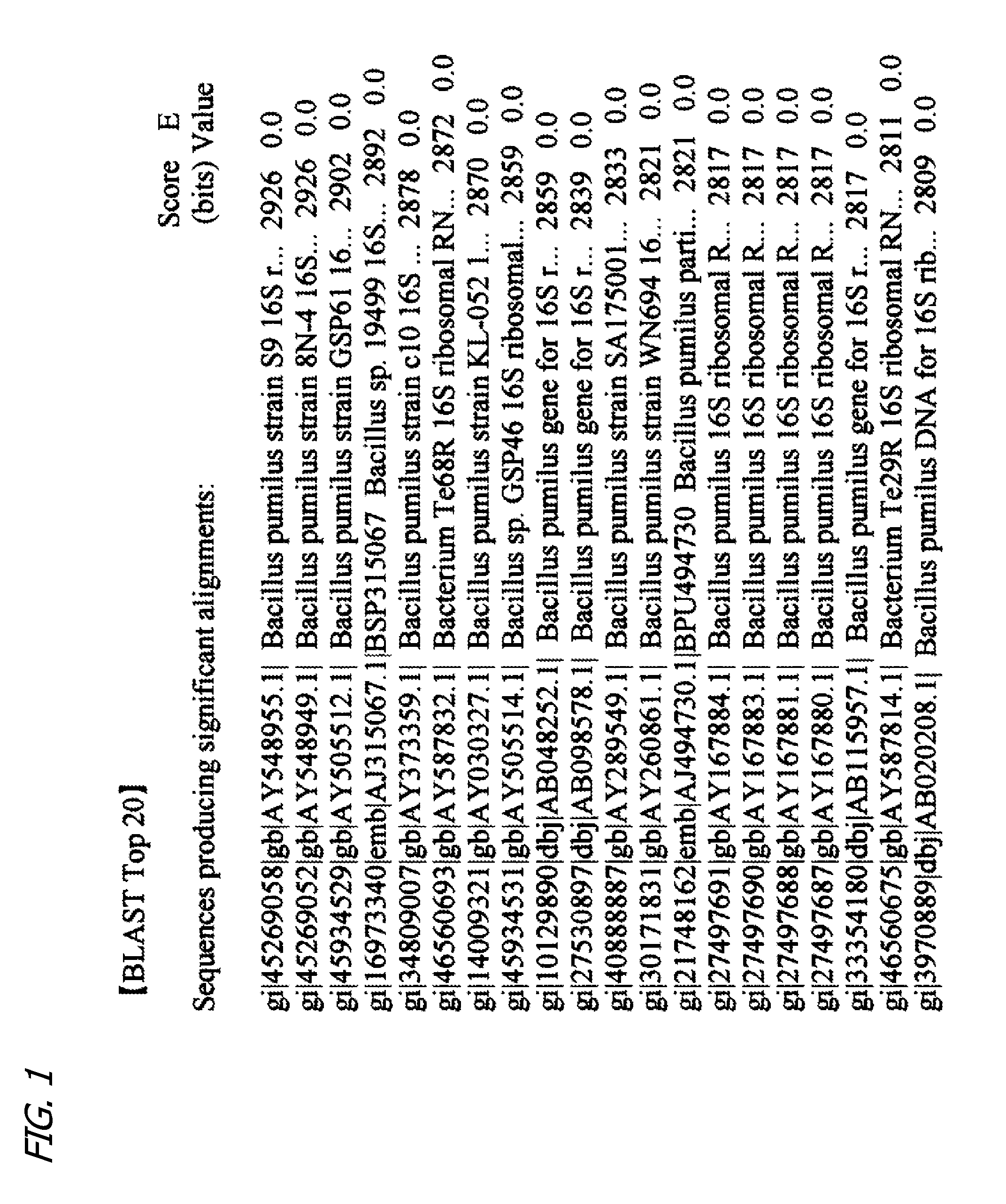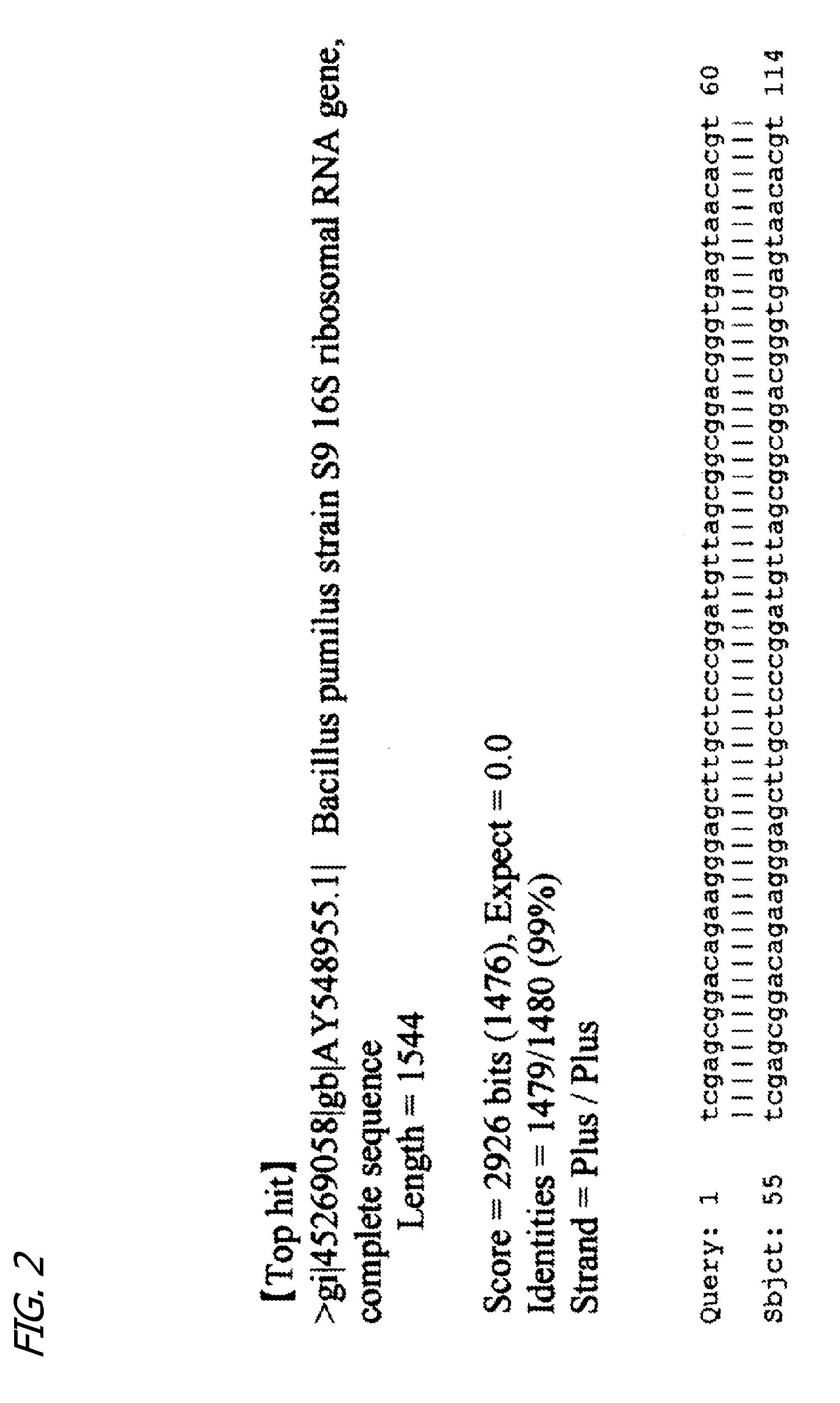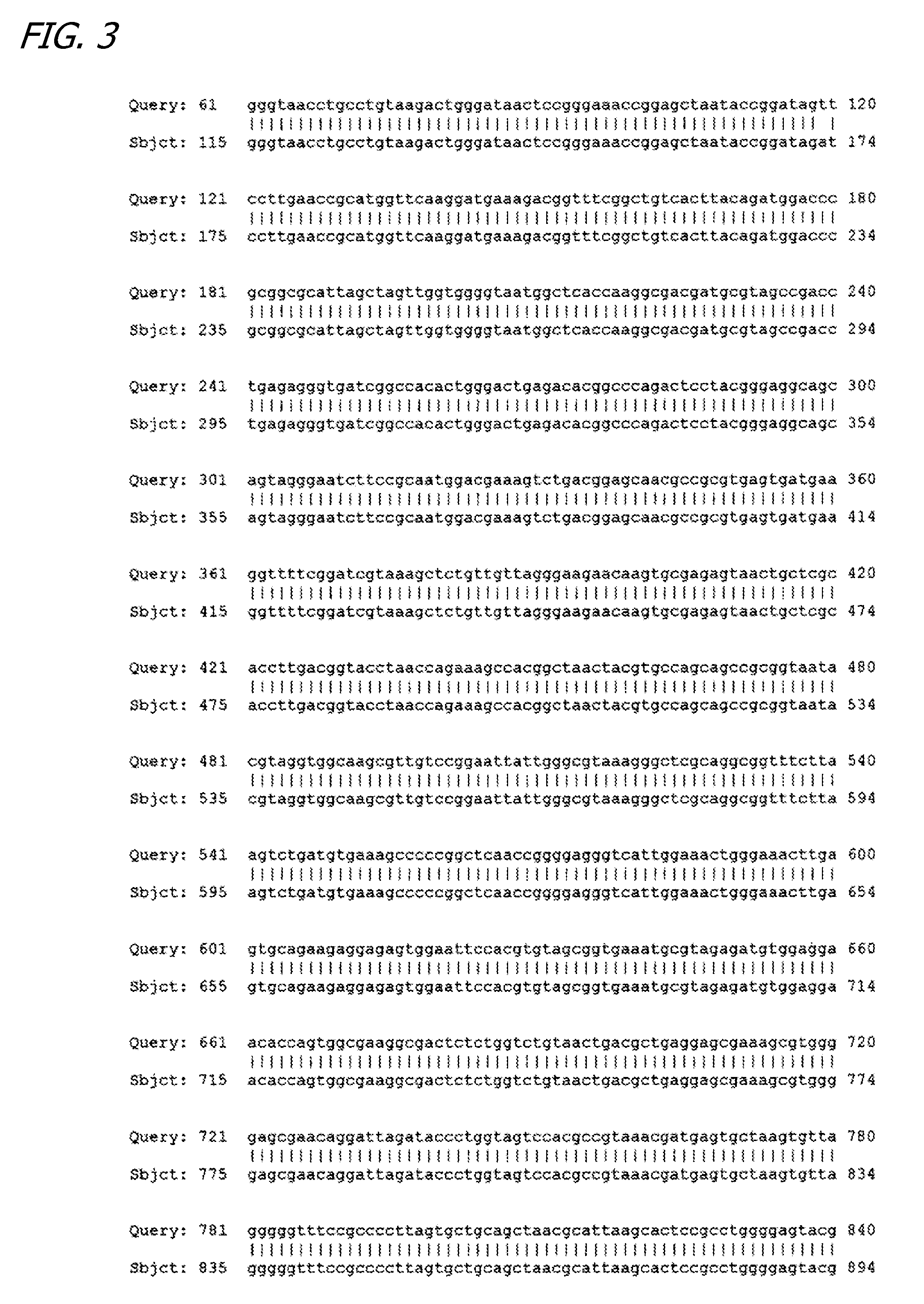Novel Microorganism Having Gastric-Juice Promoting Activity, and Its Secretory Product
a microorganism and gastric juice technology, applied in the field of new microorganisms, can solve the problems of destroying the gastric condition of bacteria, not developing gastric juice promoters that are nontoxic to living organisms, and affecting the manufacture of therapeutic agents utilizing discovered novel microorganisms and their secretory products, and achieve the effect of promoting gastric juice secretion
- Summary
- Abstract
- Description
- Claims
- Application Information
AI Technical Summary
Benefits of technology
Problems solved by technology
Method used
Image
Examples
first embodiment
[0048]This microorganism is punctuate or catenulate in shape and 0.5 to 1 μm×10 to 20 μm in size with flagella on its both ends, and has motility to perform figure-eight movement. Although the microorganism is aerobic gram-positive bacillus or coccus with spores, it also takes on catenulate shape. The isolation source is the human stomach wall or blood. The cultivation conditions are as below. Per 1000 ml medium, (trypto-soya broth) are added the nutrients
[0049]peptone—17 g,
[0050]soybean peptone—3 g,
[0052]glucose—2.5 g, and
[0053]potassium hydrogenphosphate—2.5 g,
and 3 g caustic soda is added in. The pH is adjusted to 8.5. Nutrient medium sterilization conditions: 121° C., perform 15 minutes; cultivation temperature: 37° C.; cultivation period: from 2 to 7 days. (FIGS. 6, 7, 8 and 9.)
[0054]The bacteria cultivated under the above conditions are characterized by being obligatory-aerobic; viability confirmation is by unaided visual observation or by observation...
second embodiment
[0056]As to a change in animal gastric juice, a reaction to secretion-product doses was checked.
How Secretion Product Extracted
[0057]The secretory product was extracted in the following manner: The colonies were put in an incubator with temperature of 37° C., and when the surfaces of the colonies became right gray or right yellow surfaces after two to seven days, the colonies were put in broth to cultivate bacteria for seven days at a temperature of 30° C. to 37° C.
[0058]Next, into the culture filtrate, the same amount of pure butyl alcohol as the culture filtrate was stirred.
[0059]After the culture filtrate into which the butyl alcohol had been stirred was left for three hours, or was centrifuged, clear butyl alcohol solution was separated off.
[0060]The butyl alcohol solution was added with decinomal hydrochloric acid to bring pH to 3.0, stirred thoroughly, and left for 12 hours. Subsequently, the solution was vacuum-dried to obtain right yellow crystal, organic and inorganic subst...
third embodiment
[0079]In embodiment 3 of the present invention, in order to search effectiveness of the secretory product to Xenograft model, study of influence of the secretory product on tumor cell line MKN-45 was attempted. The secretory product as test substance was administered subcutaneously in experimental animals for four weeks. As end points, weight measurement, tumor volume measurement, hematological test, and pathological test were carried out.
Experimental Overview
[0080]1. Experimental animal: Twenty animals 15.2 to 20.1 g in weigh—BALB / C-nu-type male mice purchased at the age of four weeks—were used. Through the experimental period, the animals were bred in an animal room arranged in a region in which a temperature was 20 to 26° C., a relative humidity was 40 to 70%, the times of ventilation was 10 to 20 times per hour, lighting hours were 12 hours.
[0081]2. Breeding conditions: Water and feed are freely taken.
[0082]3. Experimental groups: When tumors developed to have an average volume ...
PUM
| Property | Measurement | Unit |
|---|---|---|
| temperature | aaaaa | aaaaa |
| pH | aaaaa | aaaaa |
| size | aaaaa | aaaaa |
Abstract
Description
Claims
Application Information
 Login to View More
Login to View More - R&D
- Intellectual Property
- Life Sciences
- Materials
- Tech Scout
- Unparalleled Data Quality
- Higher Quality Content
- 60% Fewer Hallucinations
Browse by: Latest US Patents, China's latest patents, Technical Efficacy Thesaurus, Application Domain, Technology Topic, Popular Technical Reports.
© 2025 PatSnap. All rights reserved.Legal|Privacy policy|Modern Slavery Act Transparency Statement|Sitemap|About US| Contact US: help@patsnap.com



